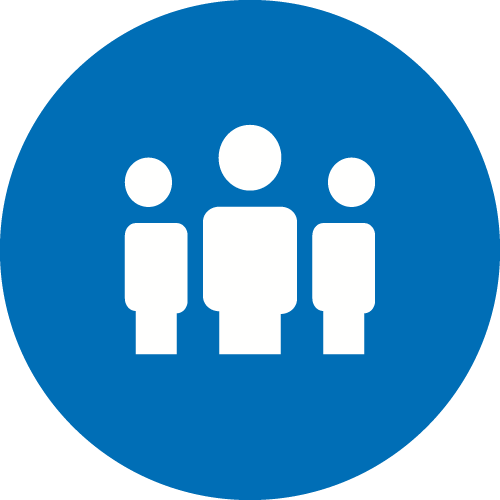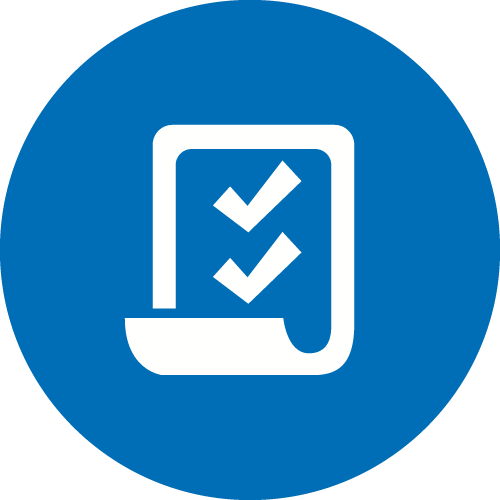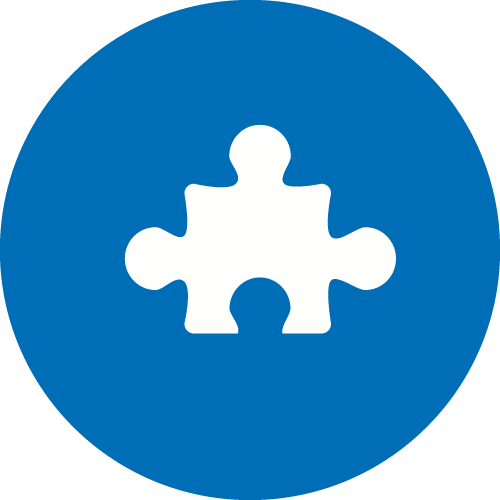Norway: Easy communication is the key to closer contacts
One screen and one button. That’s how simple Norwegian company No isolation’s Komp is – a device designed for people who have difficulties with digital technology, but who want to keep in touch with their loved ones. During the pandemic, care homes were among those to use Komp as a communication channel.


Komp/No isolation


Norwegian company No isolation’s Komp is a simple screen designed for people who have difficulties with digital technology.
“It’s a solution to prevent vulnerable groups from feeling lonely and isolated,” says Erik Børve Rasmussen from OsloMet University.
He is one of the researchers in the research group WATT (Welfare Access Through Technology), which is conducting research into subjects including Komp.
Because of the stigma attached to loneliness, Komp is rarely marketed to people as a means of countering loneliness, but the focus is rather on the solution itself – to keep in touch.
“Loneliness is stigmatised. You can’t market a device for lonely people, instead you want to highlight the opportunity to keep in contact with the family. A kind of everyday chat, where you get to find out what the grandchildren have been up to during the day,” says Børve Rasmussen.
He explains that the aim of Komp is to introduce more human relationships into the everyday lives of lonely people. According to him, people often talk, in negative terms, about ‘cold technology’ replacing warm hands.
“No isolation was among the first to coin the phrase ‘warm technology’. You could say that it’s technology that is warmed up by human interaction,” says Børve Rasmussen.
Because the interface is so simple, it’s important that Komp is not acquired for the ‘wrong’ person.
“It’s been developed for people who can’t cope with modern digital technology. Komp is probably the wrong solution for someone who’d be able to use a smartphone.”
According to Børve Rasmussen, trying to create solutions that work on a broad level is generally challenging. The healthcare sector likes to have customised products, but not too many solutions.


Komp is intended for people who need help to communicate, or in places such as care homes. To make it simple, Komp has just one button. You turn the button and the screen is switched on, and if you turn it more, you can increase the volume.
Family members and friends can use a mobile app to send pictures to the screen or make video calls, which are answered automatically after ten seconds.
“It was a trade-off for No isolation – the simple interface means less control for users of Komp, but if you as a receiver don’t want to answer a call, you can just turn it off,” explains Børve Rasmussen.
Gøril Hoff Dalehamn is Quality Manager at the Nordseterhjemmet care home in Oslo. Komp became a useful solution for them during the pandemic.
“We saw it as an aid for patients, family and staff, so they had less to worry about, despite the closed doors,” says Hoff Dalehamn.
Another expectation is that the healthcare system will start to use Komp as a complement to physical visits. Carers can use the digital channel, for example, to remind a patient to take their medicines or check how a wound has healed. It is also possible, for example, to provide physiotherapy remotely.
“This can be done more frequently than if you need to drive to visit everyone in their home, especially in places with large geographical distances,” says Børve Rasmussen.


In several interview studies conducted by Erik Børve Rasmussen, it emerges that what users appreciated above all about Komp is the opportunity to feel part of the everyday lives of family members and friends – despite not being able to meet up physically.
“For example, you might send a picture of that lamp you bought during the day,” says Børve Rasmussen.
According to him, Komp users were generally more satisfied with their social lives after having started to use Komp, even though conversations via Komp can also result in arguments with their loved ones that might not otherwise have become an argument.
“But if you’re arguing with someone, you’re not socially isolated,” says Børve Rasmussen.
For some people with advanced dementia, Komp was not the ideal solution. They might not recognise their children or understand that it is, for example, their daughter who is calling them.
“It can be confusing and cause concern among patients if someone pops up on the screen. So we set it up so that family members phoned staff first and asked them to go and forewarn the parent in the home,” says Hoff Dalehamn.
Børve Rasmussen also confirms that some people with dementia became frightened or did not understand what was happening when they received a call.
“But interaction via Komp can also be seen as an element of dementia care. Engaging patients can be one way to combat dementia. But the way it’s used must be adapted to the user. For someone with dementia, it might not be so exciting to see pictures of children or grandchildren that they’ve forgotten that they have,” he says.
In such instances, you can instead share old photos and use them as a starting point for conversations with family members and relatives.
Gøril Hoff Dalehamn at Nordseterhjemmet believes that Komp can also be an excellent complement in the future if, for example, norovirus or other infectious diseases are circulating.
“If that happens, we can close the doors and protect the patients. New care homes should have screens at every bedside,” she says.


The theory behind Komp is based on the main problems surrounding loneliness in the elderly – that you lose contact with your family. Put simply, No isolation wants to connect analogue grandparents with digital grandchildren.
But loneliness is a complicated research issue. According to Erik Børve Rasmussen, there are many levels of loneliness.
“Involuntary loneliness is about expectations – that is, how much interaction with others you expect,” says Børve Rasmussen.
He explains that in collectivist cultures such as Italy, older people feel more alone than older people in more individualistic cultures such as Sweden. This is because Italians expect more social interaction with their families – and when social interaction ceases, Italians feel more alone.
“The important thing is to identify the kind of interaction that older people want more of.”
It is partly true that more and more elderly people feel lonely, but it is also due to the fact that there are more elderly people now than there used to be.
“Loneliness is linked to the fact that you can no longer do the things you used to do, that people around you die and networks disappear,” says Børve Rasmussen.
Staff at care homes require a one-time initiative when they familiarise themselves with how Komp works. One concern at Nordseterhjemmet in Oslo was that Komp would require a lot of extra resources, but members of staff did not feel that Komp created extra work.
“No isolation offers good support if we need help with something,” says Gøril Hoff Dalehamn.
At the same time, she acknowledges that a family that wants to be in contact with relatives at the home must also be digitally literate.
“But that’s becoming more the case, the more digital we become. For my part, I see that it provides reassurance. The images that are sent are important, and those who have used Komp have been really satisfied,” she says.


The first empirical study of Komp was conducted among older people with cancer on behalf of the Cancer Association, which wanted to investigate whether Komp could prevent involuntary loneliness (Oppedal, Bjarne, Clemet Askheim and Marit Haldar. “Erfaringer Med KOMP Som Velferdsteknologi”. [“Experiences with KOMP as Welfare Technology.”] Skriftserien, 2019, 56–56). In this interview and observation study, researchers talked to older users and their loved ones.
During the coronavirus pandemic, Børve Rasmussen and his colleague Sehrish Akhtar conducted research into municipal care of the elderly and wrote the report Enkel og trygg pårørendekontakt: Forskningsrapport fra et pandemiprosjekt om bruk av sosial teknologi for eldre på langtidshjem. (In English Simple and safe contact with loved ones: research report from a pandemic project on the use of social technology for the elderly in care homes.) Skriftserien 2022, no. 4 (2022): 71.
In the article Varm teknologi mot ensomhet blant eldre? (In English Warm technology against loneliness among the elderly?), Børve Rasmussen and his colleagues write about how they have tried to counter loneliness among the elderly with the aid of digital technology.
“But none of these projects can state definitively that the level of loneliness has changed among Komp users, because loneliness is difficult to measure. But what we can show is that for people who cannot cope with modern technology, Komp makes them feel closer to their families and they are more satisfied with their social life,” says Børve Rasmussen.
At present, an RCT is under way in which a group that is using Komp is compared with one that does not. One of the main issues is to see how long each group lives at home.
Despite several research projects, Erik Børve Rasmussen points out that it is not possible to unambiguously measure the effects of technology such as Komp, as the cause and effect of loneliness and social contacts are interlinked.


According to Børve Rasmussen, the use of Komp does not necessarily save money within a certain budget framework, but money is instead saved elsewhere if Komp, for example, enables the patient to live longer at home and does not need to move into a care home.
Further research and evidence are needed to be able to draw any firm conclusions about the economic benefits.


Researcher Erik Børve Rasmussen notes that it would be easy to pass on the Norwegian innovation to other Nordic countries – mainly because there is similar legislation on video communication and privacy. Our communication cultures are also quite similar.
“Virtually everyone has smartphones and is used to apps. I believe in general that communication technologies such as Komp can work really well in most industrial countries,” says Børve Rasmussen.